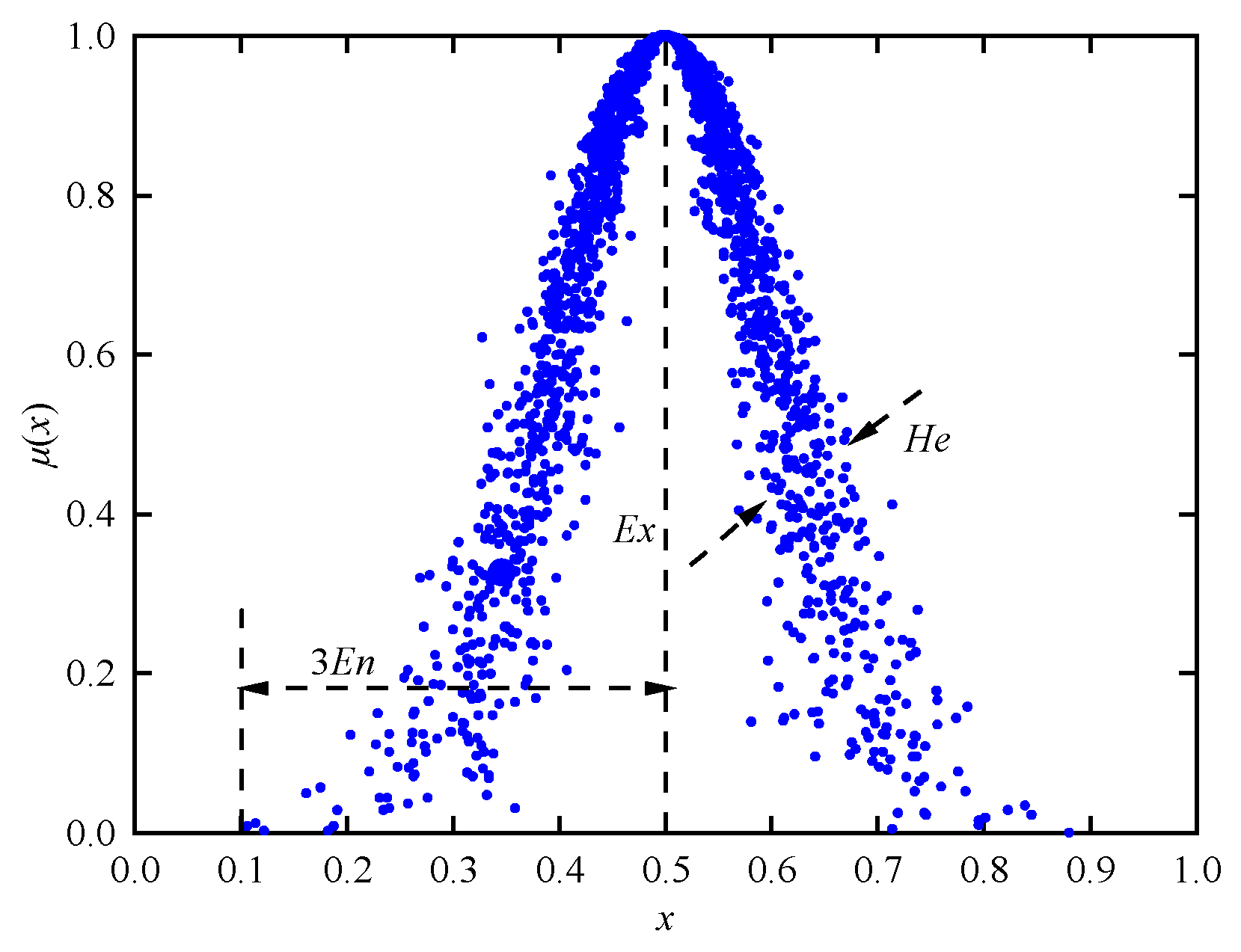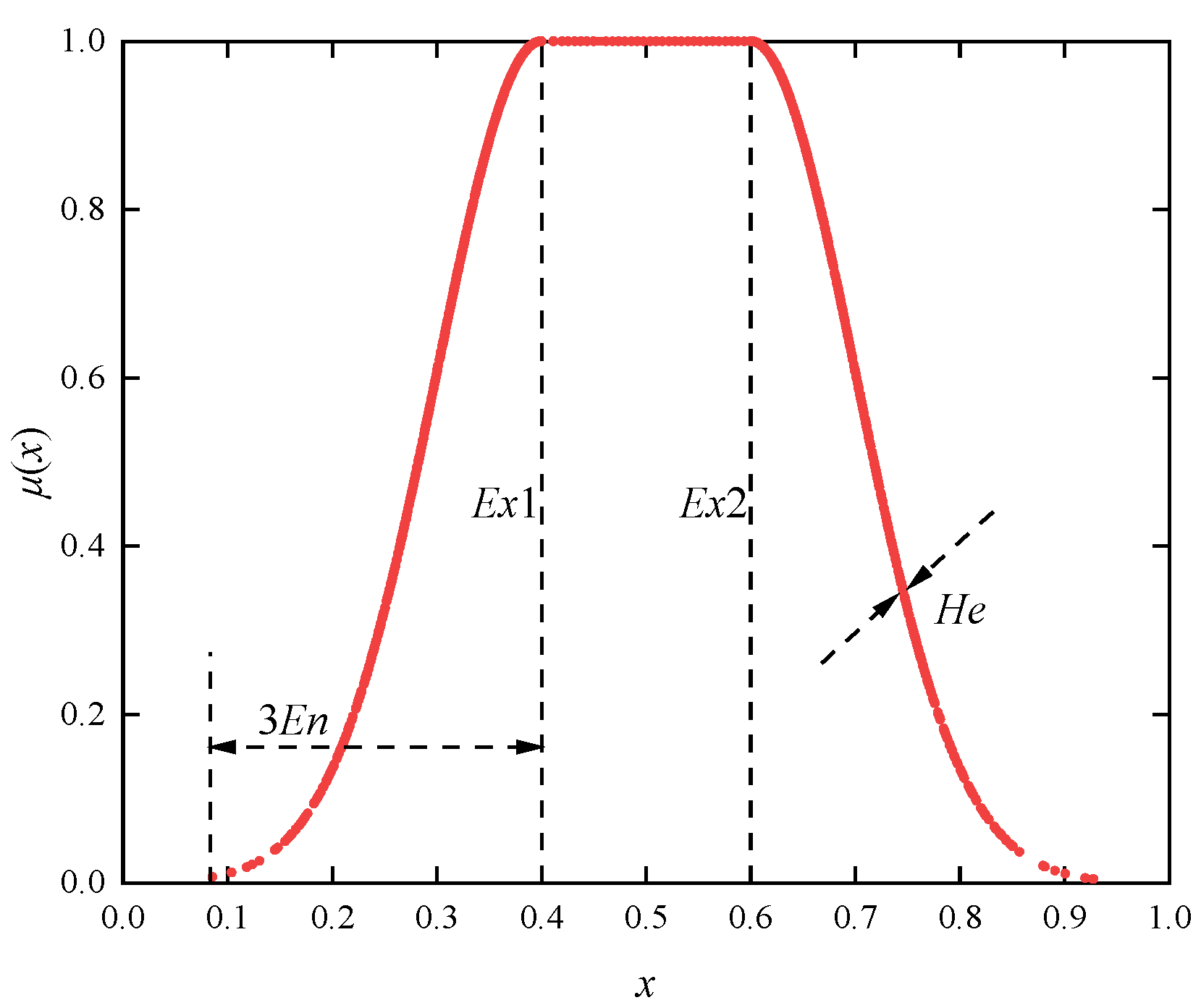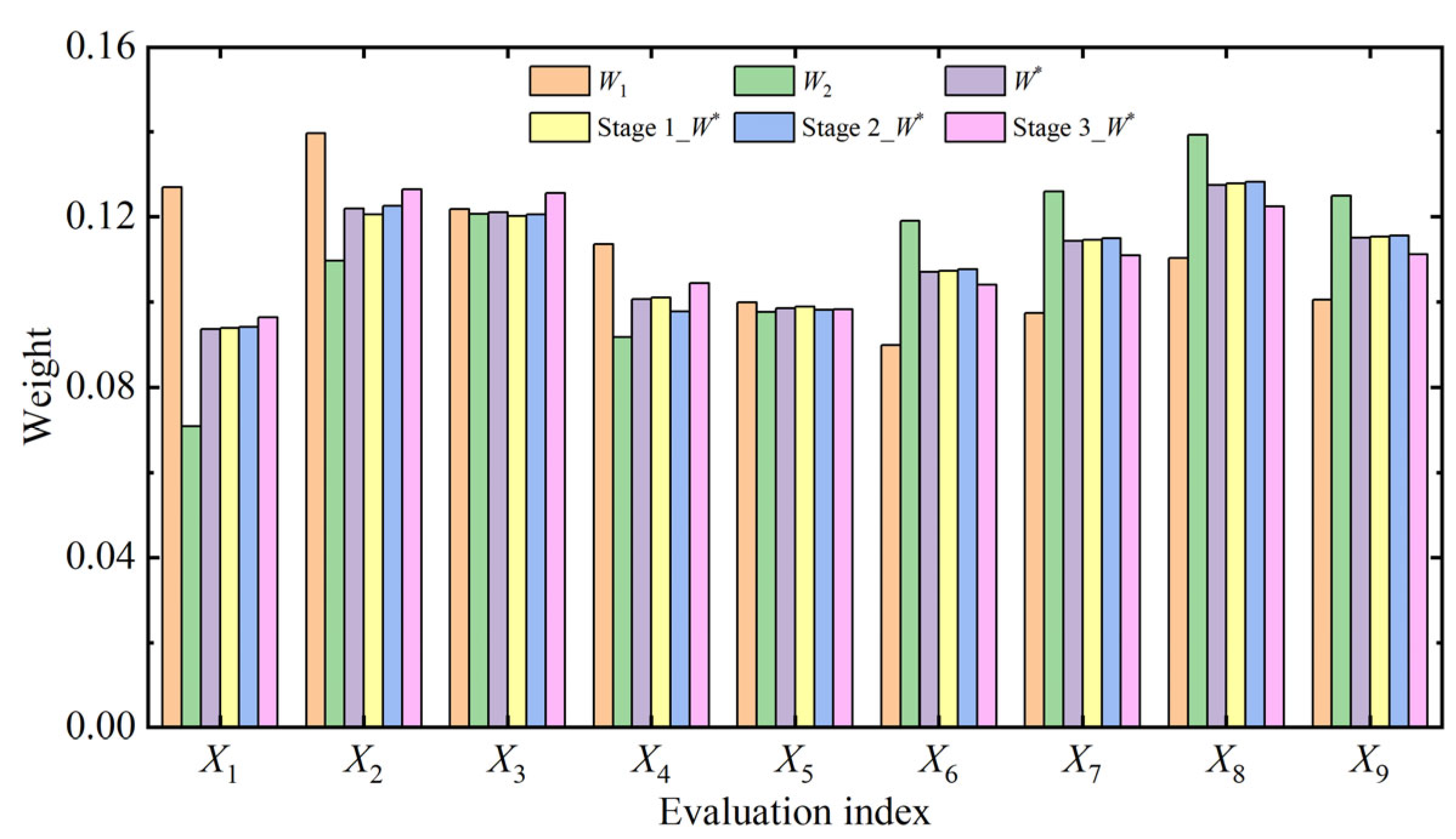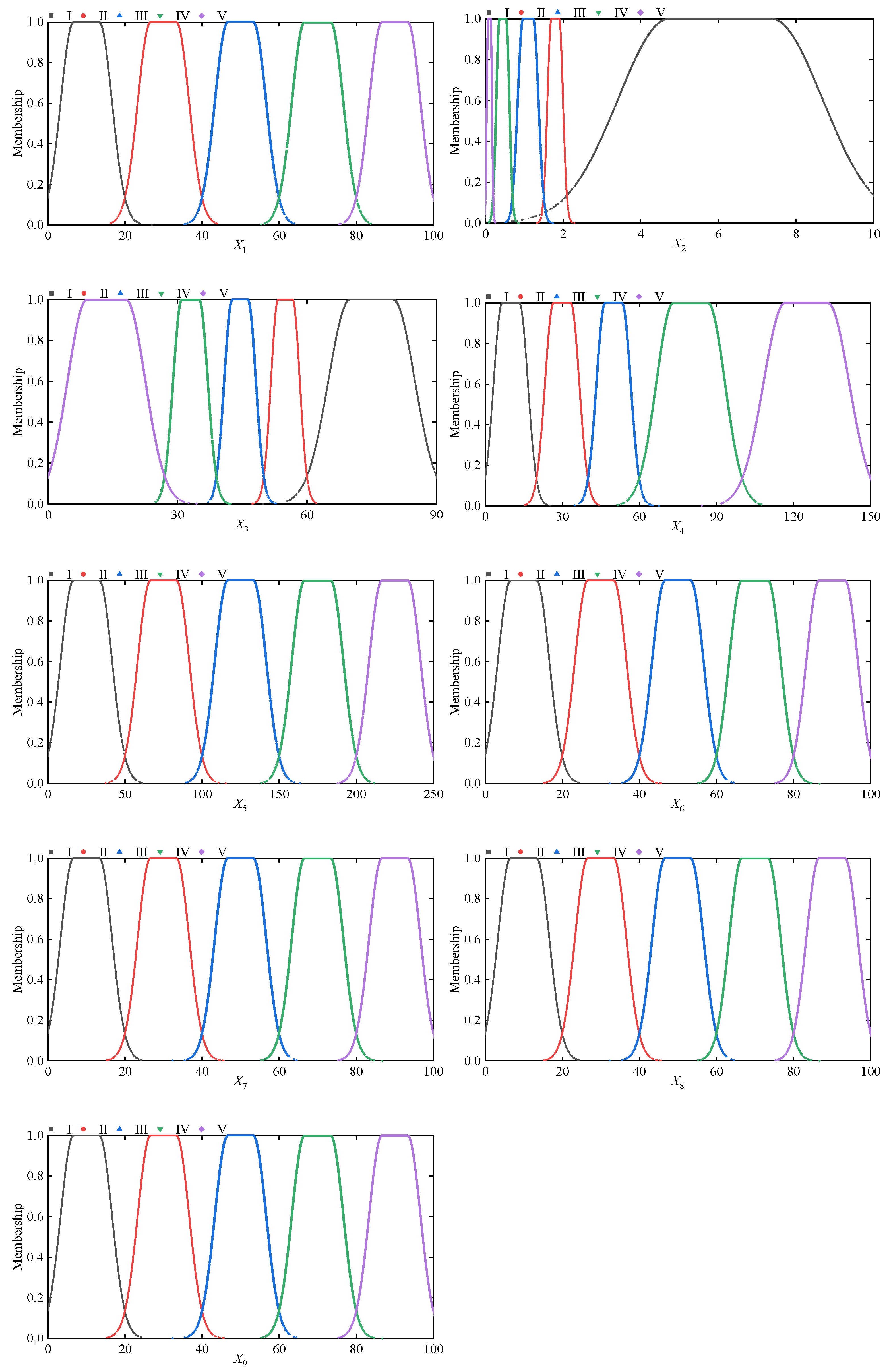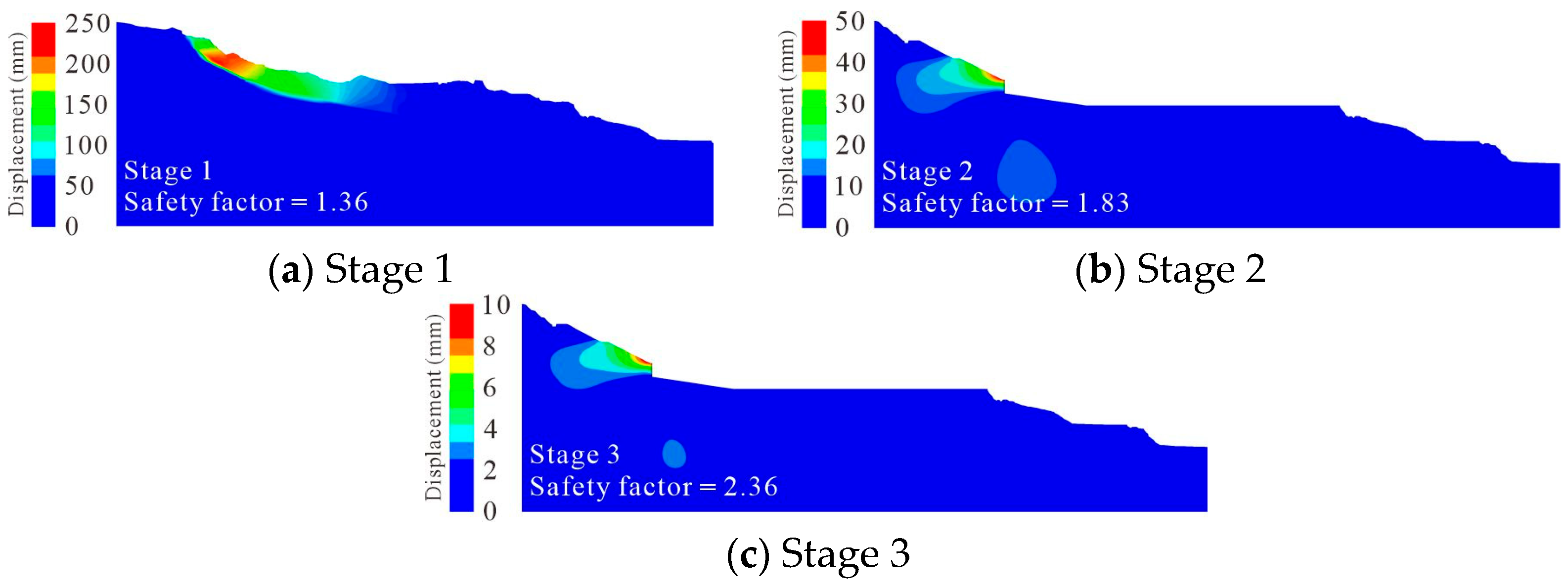Slope stability evaluation is a core technique for ensuring infrastructure safety and mitigating geological disaster risks, and innovations in its theories and methods are crucial to the sustainable development of transportation engineering, mining, and urban construction [
1,
2]. With the large-scale advancement of engineering construction, slopes are increasingly confronted with complex geological and environmental challenges [
3]. Frequent slope failures cause significant loss of life, property damage, and ecological degradation. Moreover, slope stability issues exhibit notable multi-factor coupling, spatiotemporal dynamics, and complexity of failure mechanisms. Traditional single-method approaches are increasingly inadequate for precise evaluation requirements [
4,
5]. Therefore, conducting scientifically accurate slope stability assessments based on multiple theories holds significant practical importance.
Numerous scholars have conducted extensive research on slope stability evaluation. Nguyen [
6] simulated the effects of various rainfall scenarios on slope saturation and velocity vectors using FLAC 3D 6.0 software, finding that high-intensity, short-duration rainfall is prone to trigger slope instability, and proposed reinforcement measures combining soil nails and steel mesh, and validated that slope stability is enhanced after reinforcement. The results provide a reference for similar slope stability assessments and mitigation efforts. Chand [
7] utilized UAV-acquired imagery to construct a slope surface model and generated a model with realistic geometry through numerical simulation. Applying the finite difference method and limit equilibrium method, he analyzed safety factors and failure probabilities under static, pseudo-static, and dynamic loads, providing an effective approach combining numerical simulation and probabilistic analysis for slope stability evaluation. Kumar [
8] developed a numerical simulation model of slopes incorporating multiple soil layers, and analyzed variations in multiple slope parameters by simulating dry and wet conditions as well as two rainfall scenarios. The study validated the effectiveness of impermeable layers in enhancing slope stability, thereby providing a basis for waterproof design of open-pit mine slopes. However, numerical simulation methods rely on precise geological parameters and boundary conditions, and have limited adaptability to complex nonlinear problems, exhibiting drawbacks such as high computational costs and difficulties in parameter inversion, making them insufficient for the rapid assessment demands of engineering applications. In recent years, machine learning algorithms have demonstrated potential in slope stability prediction due to their strong nonlinear fitting capabilities. Pei et al. [
9] proposed three knowledge-guided machine learning (KGML) methods to integrate geotechnical knowledge into data-driven models for slope stability prediction. Benchmarked against pure data-driven models and domain knowledge–based models using 96 slope cases and five-fold cross-validation, the KGML methods outperformed both, with hybrid models and knowledge-guided loss function reducing discrepancies between predictions and factor-of-safety values, aligning better with slope stability physics. Huang et al. [
10] innovatively used long short-term memory (LSTM) for slope stability prediction. With Ganzhou as the study area, they selected 5 control factors, built slope models via Geo-Studio, calculated stability coefficients with limit equilibrium method, and created 2160 training and 450 testing samples, comparing LSTM with convolutional neural network (CNN), support vector machine (SVM), and random forest (RF) models via root mean square error (RMSE) and modeling efficiency (EF). LSTM extracted global features better, achieving the highest accuracy. Sabri et al. [
11] presented a comparative study of four neural network-based models—artificial neural network (ANN), Bayesian neural network (BNN), CNN, and deep neural network (DNN)—for slope stability analysis. They collected soil parameters (cohesion, internal friction angle, and volumetric weight) and seismic coefficients as inputs and built a dataset of 1000 samples (800 for training, 200 for testing). They found that ANN outperformed other models in the testing phase. However, machine learning methods rely heavily on large amounts of high-quality data, exhibit a “black box” nature, and have limited interpretability regarding physical mechanisms. Their generalization capability is constrained by data distribution and parameter tuning strategies. Slope stability evaluation is inherently a complex process characterized by fuzziness and randomness, where the boundary definitions and interactions of influencing factors are often difficult to quantify precisely. Fuzzy theory provides an effective approach to address such issues through membership functions and uncertainty modeling. Chen et al. [
12] proposed a group decision-making analytic hierarchy process (AHP) method based on confidence indices, which effectively addresses the issue of fixed indicator weights in rock slope stability assessment, and applied it to the stability assessment of a slope in Fujian province. The results indicate overall slope stability but local extreme instability, which is highly consistent with actual field conditions, validating the effectiveness of the proposed evaluation method. Bai et al. [
13] established a risk assessment model for gently inclined mudstone bedding slopes using the analytic hierarchy process (AHP) and fuzzy comprehensive evaluation (FCE) and selected four primary evaluation indicators and 16 secondary indicators, calculated indicator weights via AHP, constructed membership functions for single and synthetic index measurement, and determined risk grades using the weighted average membership degree criterion. A case study in Guizhou showed the slope risk grade was high risk, consistent with actual monitoring data, verifying the method’s reliability and providing a new approach for slope risk assessment during the operation period. Wu et al. [
14] proposed a modified cloud model for stability grade evaluation of high-steep open-pit slopes with soft rock formations. Based on the AHP, they established an evaluation index system with quantized grade intervals, calculated the weight of each index. Taking a specific open-pit mine as an example, the results showed that the slope stability was unstable, consistent with numerical simulation and traditional limit equilibrium method results, confirming the model’s scientificity and providing guidance for open-pit mine safety production. Yang et al. [
15] combined fuzzy analytic hierarchy process (FAHP), information entropy theory, and set pair analysis (SPA), proposing an improved set pair analysis model (EFAHP-SPA) for open-pit mine slope stability evaluation, and validated the model’s effectiveness and reliability. These methods integrate qualitative knowledge with quantitative analysis, thereby addressing the limitations of traditional numerical simulation and machine learning in handling uncertainties. These studies have significantly contributed to the advancement of slope stability theory. However, slope stability evaluation is a complex process influenced by multiple variables and factors. Relying solely on a single theory to assign weights to evaluation indicators has inherent limitations; only dynamic weighting can reasonably reflect the varying impact of different indicators on the evaluation outcome. Moreover, effectively balancing the relationship between qualitative and quantitative indicators, as well as addressing the fuzziness and randomness between indicators and evaluation criteria intervals to scientifically determine slope stability levels, remains one of the urgent challenges.
Therefore, this study first constructed a slope stability evaluation indicator system based on indicator selection principles. Subsequently, the subjective constant weights and objective constant weights of the evaluation indicators were determined using the intuitionistic fuzzy analytic hierarchy process and an improved CRITIC method, respectively, followed by the calculation of the comprehensive constant weights of each indicator based on game theory. Meanwhile, dynamic adjustment of the comprehensive constant weights was performed by introducing variable weighting theory. Finally, based on the dynamically adjusted indicator weights, a slope stability evaluation model was established using the trapezoidal cloud model, and its validity was verified through engineering case studies. This study offers a novel approach for slope stability evaluation, while providing more reliable theoretical support and technical methods for engineering practice.

